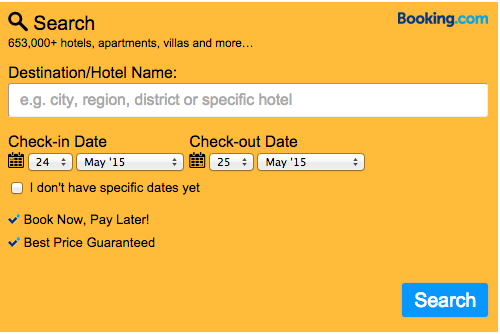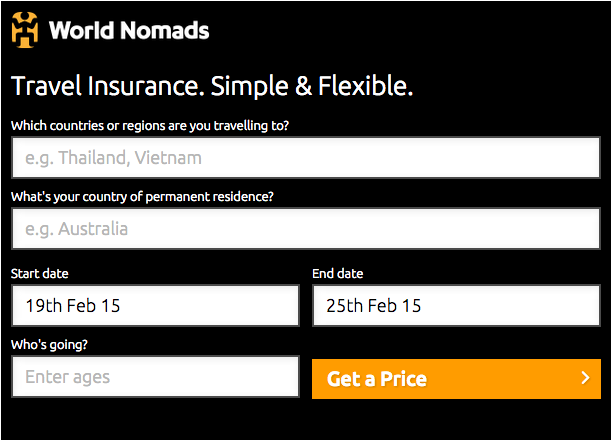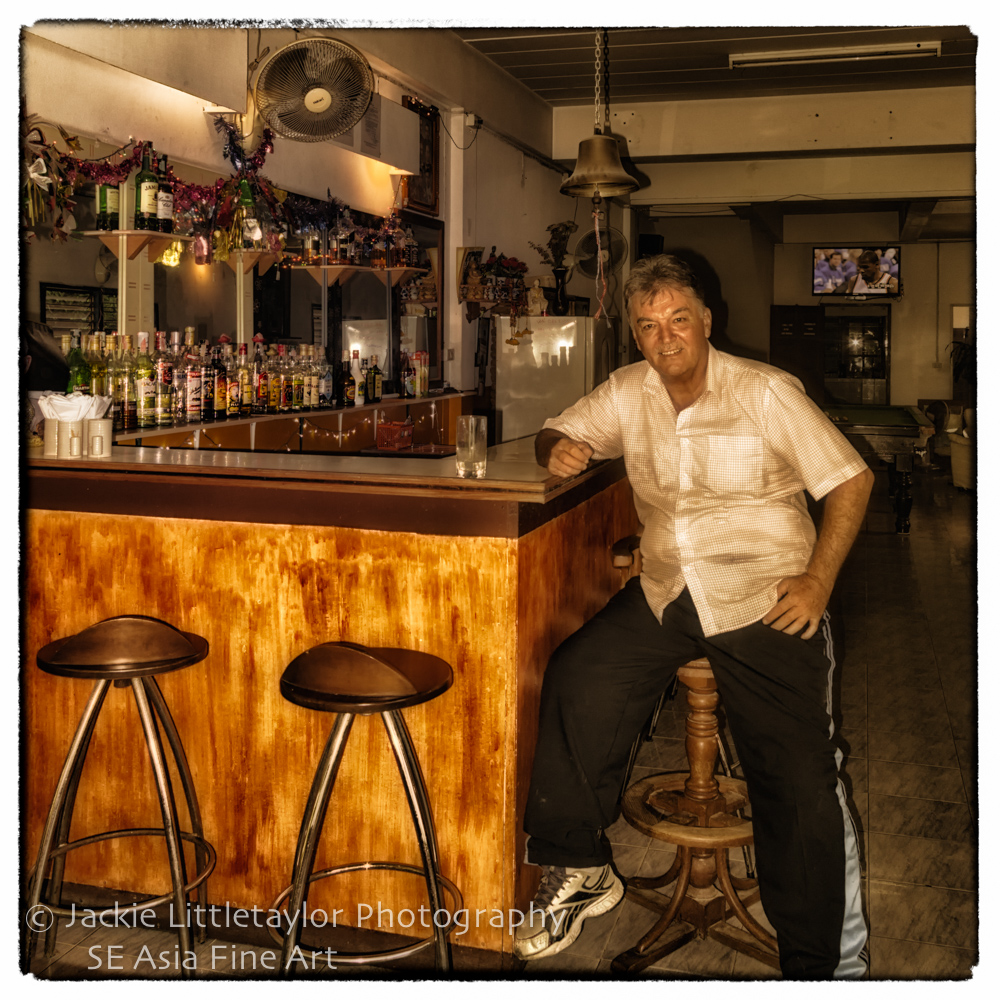Bus Travel
Long-distance bus services connect most cities in Vietnam. Most depart early in the morning to accommodate traffic and late afternoon rains, or run overnight. It is important to note that average road speeds are typically quite slow, even when travelling between cities. For example a 276 km (172 mi) journey from the Mekong Delta to Ho Chi Minh City by bus will likely take about 8 hours.
Public Buses travel between the cities’ bus stations. In bigger places, you often have to use local transport to get into the city centre from there. Buses are generally in reasonable shape, and you have the chance to interact with locals.
Vietnamese buses are made for Vietnamese people - bigger Westerners will be very uncomfortable, especially on overnight buses. Also, many Vietnamese are not used to riding on long-haul buses, and will sometimes get sick - not very pleasant if you are stuck on an overnight bus with several Vietnamese throwing up behind you.
Even if you are sometimes bus-sick, it is advisable to book a seat at the middle section rather than at the front of the bus. First, you will avoid viewing directly the short-sighted risks the driver is taking on the way. Second, you will somewhat escape the loud noise of unceasing honkings (each time the bus passes another vehicle, that is about every 10 seconds).
The long haul bus lines run from North to South and back on the only main road (QL1). Be aware that if you take a bus going further than your destination, the bus will drop you off at the most convenient crossroads for the driver and not, as you could have expected, at the bus terminal of your destination. For Hué, this crossroad is 13 km from the city centre and for Nha Trang, 10 km. At these crossroads, you’ll find taxis or mototaxis to get you to your hotel.
If you travel with a bicycle, negotiate the extra fee with the driver rather than the ticket counter before buying your ticket. The bicycle fee should be no more than 10% of the ticket price.
A scam that you may encounter is that after arriving at your location, guides will ask you whether you have booked a hotel. Even though you haven’t, say that you have and prepare the name of a hotel. If you say you have not booked one, they will charter a taxi for you and probably drop you at a hotel where they can collect commission. If you decide not to stay, things may get a little ugly, as they will demand that you pay the taxi fare, which they may quote as several times the actual fare for a ten minute ride.
One of the major bus companies is Hoang Long [1]. They have an excellent website in english that provides all rate information as well as locations of bus terminals in all cities they service. You can bypass the travel agents altogether and head straight for bus station since the agent will simply sell you the very same ticket. If you choose to go the lazy route and use the travel agent at least reference the Hoang Long website for what the bus ticket should cost you. Do not give the travel agent a commission of more than a dollar.
Open Tour buses are run by a multitude of tour companies. They cater especially to tourists, offering ridiculous low rates (Hanoi to HCMC: US$20-25) and door-to-door service to your desired hostel. You can break the journey at any point and continue on a bus of the same company any time later, or simply buy tickets just for the stage you’re willing to cover next. If you’re not planning to make more than 3-4 stops, it might be cheaper to buy separate tickets as you go (ie Hanoi to Hue can be as low as US$5). Also the open ticket limits you to using only one company and does not guarantee you a seat on any bus. Most hotels and guest houses can book seats for any connection, although you’re better to shop around at travel agents, as prices will vary on any given ticket/bus company. Going to the bus company office may net you a commission-free fare. C
Although the bus company will usually be happy to collect you at your hotel or guest house, boarding at the company office will guarantee a choice of seats and you’ll avoid getting stuck at the back or unable to sit next to your travelling companions. The offices are generally located in or near the tourist area of town, and a short walk might make your trip that much more pleasant.
Since tour companies charge very little, they do make commission on their stop-offs which are often at souvenir shops, where you do not have to buy; they always have toilets and drinks and water available for purchase. The estimated time for a bus trip will not be accurate and may be an additional couple of hours sometimes, due to the number of stop offs. Collecting the passengers at the start of the journey can also take quite a while too. Always be at least half an hour early to catch the bus. Try not to drink too much water, as rest stops, especially for overnight buses, may be just somewhere where there are a lot of bushes.
WARNING - Be very careful of your possessions on the overnight bus, people (including bus employees) have been known to look through passengers bag’s and take expensive items such as iPods and phones and sell them on for profit. If you are travelling with an iPod DO NOT FALL ASLEEP WITH IT IN YOUR EAR, as the chances are it will be nowhere to be found in the morning. Simply get a padlock for your hand luggage and lock everything up in there before you go to sleep.
In Vietnam, bus is the cheapest and most convenient means of transportation for foreign travellers, since the bus system has been well-developed and covered almost every part of the country. If you are stuck on the very first steps such as how to find a bus or which route to go, stay calm and read the following guide.
Interprovincial buses
Each province in Vietnam has its own major terminal, especially in big cities like Hanoi (My Dinh Bus station, Giap Bat Bus station), Ho Chi Minh City (Mien Tay, Mien Dong); you can find buses going to every tourism destination as well as other province in Vietnam. Typically, interprovincial buses are high quality ones with good services, large and comfortable seats. All you have to do is to buy tickets from registered ticket booths inside the terminal, and later show it to the conductor on the bus. There is no limitation for the size of baggage.
The price depends on the distance of the route and type of seats chosen. Tourists can ask their travel agencies to purchase ticket in advance, or even book ticket via phone or Internet by themselves. Notice that Internet booking bus ticket is not very popular, only applicable to a few large bus companies like Hoang Long. If you depart from minor provinces and there is no direct route to your intend destinations, it is advisable to catch a bus to major cities (Hanoi for northern provinces, Hue or Da Nang for central area, and Ho Chi Minh City for southern provinces) and then change the bus there.
Local buses
In Hanoi, Ho Chi Minh City and some major tourism destinations, there is public bus service for people both local and foreigners. Those buses also departure from major terminals before heading to other streets. In other provinces, we also have buses run by private companies. Passengers can catch bus at bus stops scattering around the province and buy ticket directly from the conductor. Although the ticket is very cheap (under VND 10000), the service is not very high (you may have to stand if the bus is too crowded, the bus may not have air conditioner, or the conductor cannot speak English). However, local bus is one interesting way to understand more or make friends with local people. Though, there are areas in which public buses are forbidden to access, such as District 1 and 3 in Ho Chi Minh City. So, for the sake of yourself, you should get a map of the main routes of each city’s public buses on sale at bookstores
Bus travel tips
• Only buy bus tickets from registered booths of large companies inside the terminals. Some prestigious names to mention are Hoang Long, Viet Thanh, Sinh café, Hanh Café and Mai Linh. Avoid waiving bus along the way for your own safety reasons (those buses may run around the cities until it collects enough passengers, which may take hours)
• Ask the price before hopping on or you may be overcharged. Normally, ticket price is the same to everyone.
• Bring along with you a piece of paper and a pen to write down your destination or questions, as language barrier can cause difficulties.
• Keep strict eye on your luggage and wallet, especially if using public and local bus.
• Do not hesitate to ask the conductor, the driver or even your fellow passengers if there is anything making you confused. Vietnamese are very friendly; they will be more than willing to help you.
HANOI BUS
Travel by public bus has become popular in Hanoi now due to the cheap price and availability. Buses in Hanoi can be recognized by the typical cover with 3 main colors: white, red and yellow (see the picture below). Each bus has a number in red, centered in a white circle and made visible in the front sign of the bus.The price of a bus ticket in Hanoi is from 5,000 to 10,000 VND depending on the distances between the departure and the end point. Ticket will be handed out by a collector and you have to pay him in cash. If you plan to travel by bus, make sure you carry smaller bills.
Hanoi public buses drop passengers in the stationary points on the streets, and fortunately many of them are located near or even in front of the famous and attractive tourism destinations in Hanoi such as Hoan Kiem Lake, The Old Quarter, Hanoi Train station (Ga Hanoi), Ho Chi Minh Mausoleum and The Literature Temple.
Here are some important bus routes in Hanoi:
#07 and #17: These two are the public buses that stop at Noi Bai International Airport, the most important gateway in the North of Vietnam. The #7 bus will cross the Thang Long Bridge and head to Cau Giay, while #17 buses go to the Old Quarter via Chuong Duong Bridge.
#33 or #02: These buses will bring you to the area near Ho Chi Minh Mausoleum and from those areas, you can wander along the tree-filled boulevards like Dien Bien Phu or Le Hong Phong, before heading to Ho Chi Minh Complex.
#09: This bus will drop you at Hoan Kiem Lake and from that point, you can explore the lake’s areas and the Old Quarter on the downtown. These buses also stop at some checkpoint in Le Hong Phong and Dien Bien Phu Str., so that you can visit theHo Chi Minh Mausoleum and the areas nearby.
However, the problem you might encounter while get on a bus is that it is very crowded at peak hours. You should always keep one hand to cover your purses or place your backpack at the front, since crowded bus in Vietnam is an ideal place for pickpockets.
Also, as the bus approaches your intended destination, try your best to make the way to the back door, take a deep breath and prepare for a fast move because bus drivers in Hanoi are notorious for stopping at a stop for a very short time. You will need to be prepared to get out of the bus as fast as you can if you don’t want to miss the point. If you are unsure when to get off, ask either the driver, the ticket collector or the fellow passengers. As intimidating as it sounds, travelling by bus in Hanoi is a truly local experience.
HO CHI MINH CITY BUS
The bus system in Ho Chi Minh City covers most tourism destinations within and nearby the city with 152 routes. Buses in Ho Chi Minh City can be realized by the white cover with a light green strip. The price for bus ticket fluctuates between 3,000 and 10,000 VND, depending on the distances and the type of buses.
Buses in Ho Chi Minh city might not be as crowded as those in Hanoi, but the problem is the quality of the cars and degrading services. Moreover, the distances between the bus stops and tourist destinations are pretty far, aggravated by the long time it takes to wait for a bus. That makes this type of public transportation not the best choice to explore the city. Also, Ho Chi Minh City Bus are often named by the beginning and end points, so check your bus number carefully before getting on it.
photo by charles haynes from Flickr under Creative Commons terms.
Most buses in Ho Chi Minh City have their terminal at some major depots like Ben Thanh Station, Cho Lon Station and Mien Dong station. There are a number of buses that run past tourist attractions inside the city such as:
#147 (Cho Lon Bus Station – Tan Son Nhat) and #152 (Trung Son Resident – Tan Son Nhat): These two route have stops at Tan Son Nhat International Airport, and with these buses, you can easily get to the center of the city. Bus#147 will head to Cho Lon area while bus #152 will go to the Ben Thanh Market, a short walk from Pham Ngu Lao backpacker area.
#11 (Ben Thanh – Dam Sen Park): buses on route 11 start from Ben Thanh Station and head to Dam Sen Cultural Park, one of the most interesting playgrounds in Ho Chi Minh City. It takes about 40 minutes for the whole trip with the price of 3,000 VND
#30 (Tan Huong Market – Suoi Tien Resort): this route runs a long distance from Tan Binh county, cross the center of the city and head to the north east of the city. Along the route there are many tourism destinations such as Suoi Tien Resorts or Hung Temple. You can catch this bus in many stops in downtown area like Vo Thi Sau or Pham Ngoc Thach.
#19 (Saigon – Trung Linh – National University): This route begins from Ben Thanh Market, head to the center of the city and cross the Saigon Opera House. Then it comes to Highway 1A before heading to the National University.
another bus company to book
http://sinhcafe.com/english_info/info_opentour.htm
Bus stations
some text and photos from Vietnam travel and Living Guide
Local bus stations or terminals are often packed with people and it may seem overwhelming at first to navigate your way around. This might even be more of a problem in larger cities like Hanoi or Ho Chi Minh City where the volume of traffic is rather intimidating. Ignoring the call and wave of motor taxi men, you should always walk straight to the main building where you can find ticket booths and waiting area.
The destination points are often printed in front of each ticket booth. Check the name carefully to avoid getting to the wrong end point. Though almost all ticket sellers cannot speak English, you can always show them the name of the location you want to travel to just to make sure. Wait for a head nod or a shake, or some finger-pointing to the right booth.
Usually after you buy your ticket, there will be someone who shows you to the bus and has you seated. Avoid the back seat which can become really uncomfortable when the road is rough. The bus will be leaving on time, but many buses will run around to pick up more passengers until they are full.
MIEN TAY BUS STATION (HO CHI MINH CITY)
While Mien Dong Bus Terminal serves passengers who need to travel to provinces in the southeast region, the central highlands and the northern Vietnam, Mien Tay Bus terminal satisfies demands of traveling to Mekong Delta provinces from Tien Giang, Ben Tre to the last cape point of the country: Ca Mau.
Mien Tay Bus Terminal is located at no. 395 Kinh Duong Vuong, An Lac Ward, Binh Tan District. Due to smaller operating area (12 provinces and 1 administrative city –Can Tho city), Mien Tay Bus Terminal is smaller in comparison with Mien Dong Bus Terminal. Every day, there are over 750 buses departing for Mekong Delta provinces serving about 13,000 customers.
Buses schedule and ticket costs
> Tien Giang - Ben Tre
Price: VND 70,000-VND 80,000 ($3.5-$4).
Duration: 1.5 hours-2 hours
Schedule: 7:00; 8:30; 10:00; 12:00; 13:30; 15:30; 18:30
> Vinh Long
Price: VND 85,000 ($4.2)
Duration: 2.5 hours
Schedule: 5:00 a.m -5:30 p.m. (one bus every hour)
> Soc Trang
Sleeping bus is also available besides sitting bus.
Price: VND 125,000 ($6.3) for sitting bus and VND 155,000 ($7.6) for sleeping bus
Duration: 5.5 hours
Schedule: 6:30 p.m-11:30 p.m. (one bus every hour)
> Rach Gia
Price: VND 125,000 ($6.3)
Duration: 6.5 hours
Schedule: 1 a.m.-11:30 p.m. (one bus every hour)
> Can Tho
Price: VND 90,000 ($4.5) for sitting bus and VND 105,000 ($5.3) for sleeping bus
Duration: 3.5 hours
Schedule: 24/24 ( one bus every 30 minutes)
> Ca Mau
Price: VND 145,000 ($7.3) for sitting bus and VND 175,000 ($8.8) for sleeping bus.
Duration: 8.5 hours
Schedule: 6a.m.- 11p.m.
> Bac Lieu
Price: VND 140,000 ($7) for sitting bus and VND VND 170,000 ($8.5) for sleeping bus
Duration: 6.5 hours
Schedule: 7:30 a.m., 10:30 a.m.,11:30 a.m.,2:30 p.m.,4:30 p.m.,5:30 p.m.,9:30 p.m.
Unlike bus stations in Hanoi, the transporting companies in the South are established with higher quality buses and more professional services. However, it is advisable to take extra caution since pick-pocketing remains prevalent. If you suspect that the drivers are not in the best shape, get off the bus and wait for the next one.
How to get to Mien Tay Bus Station
The following city bus operates routes to Mien Tay Bus Station
| Route | Bus |
| Mien Tay Bus Station- Benthanh market | 2 |
| Mien Tay Bus Station-Mien Dong Bus Station | 14 |
| Mien Tay Bus Station-An Suong Bus Station | 151 |
| Mien Tay Bus Station-Go Vap | 148 |
| Mien Tay Bus Station-Bien Hoa Bus Station (Dongnai) | 601 |
| Mien Tay Bus Station- Dai Nam Amusement Park | 618 |
| Mien Tay Bus Station-Thu Duc Agricultural Market | 91 |
Bus companies in Mien Tay Bus station
Following are some of the most popular companies with routes, timetable and fares:
> Saigon Bus
Daily bus to Phnompenh at 6:30; 8:00; 9:00; 11:00. One way ticket is $12.
Bus to SiemRiep on Tuesday, Thursday and Saturday departs at 7:00 a.m. One way ticket is $24.
Website: http://www.satranco.com.vn; http://www.saigonbus.com.vn
Phone number: (083) 844-1205/ 844-0796
MIEN DONG BUS STATION (HO CHI MINH CITY)
Mien Dong Bus Terminal, located at 292 Dinh Bo Linh street of Binh Thanh district (Tel: 083-899-1607) is about 7km away from the city center. This is one of the busiest terminals in Ho Chi Minh City. Every day, the station welcomes thousands of people from the northern and the central highlands provinces to Saigon. If one is traveling to Vungtau, Phan Thiet- Mui Ne, Dalat, Nha Trang, Daklak or even to Hanoi, Mien Dong Bus Terminal is the essential departure point.
At the front of Mien Dong station (Photo by Thu Ngo, Vietnam Online)
There are currently over 200 transportation companies operating at the terminal with buses to 178 destinations scattering all over the country plus 2 in Laos.
Transit to Eastern and Northern (of Ho Chi Minh City) provinces
Depending upon your particular destination, you may choose a suitable carrier for your tri. A general rule is to go with the trusted brand, for safety reasons and their high quality of services. These include: Phuong Trang, Mai Linh, Kumho
> Nam Cat Tien
Tan Phu transportation company offers Ho Chi Minh - Nam Cat Tien route at VND 80,000 ($4).Hours start from 1:30p.m. until 4:30 p.m. It is an around 2-hour trip.
> Binh Phuoc-Phuoc Long
Thanh Cong transportation company offer Phuoc Long-Binh Phuoc route at VND 70,000-VND 80,000 ($3.5-$4). It takes 3 hours to get to Phuoc Long-Binh Phuoc.
> Vung Tau
Thanks to the close proximity and the popularity of Vung Tay beach, there are multiple, both big and small carriers operating this route. Kumho, Mai Linh or Hoa Mai top the list of recommendation. It often costs about VND 70,000 to VND 80,000 ($3.5-$4) for a ticket to Vung Tau and the trip takes about 2.5 -3 hours depending upon the traffic. There is a bus departing every 15-20 minutes from Mien Dong Bus station to Vung Tau beach on a daily basis.
> Phan Thiet Mui Ne
Phuong Trang, Mai Linh, Tam Hanh, Hanh Cafe are some recommended transportation companies for the route. It costs about VND 150,000-VND 160,000 ($7.5-$8) for a ticket. It takes 5 hours to get to Phan Thiet.
> Buon Me Thuot
Mai Linh and Kumho are recommended. There are two options: sleeping bus (VND 200,000-$10) or sitting bus (VND 160,000-$8). It takes 9 hours to get there.
> Gia Lai
Some noticeable companies are Hong Hai, Thuan Hung, Truong Thanh. They depart in the evening from 7p.m. There is a bus every 30 minutes. Hong Hai offers sleeping buses departing daily at 7:30 p.m. at VND 270,000 ($13.5). It takes about 10-12 hours to get from Ho Chi Minh City to Gia Lai.
> Dalat
Phuong Trang and Mai Linh offer Dalat route at VND 170,000-180,000 ($8.5-$9). Sleeper bus is available when traveling with Phuong Trang. It takes about 8 hours to get to Dalat.
> Nha Trang
Phuong Trang offer sleeping bus to Nhatrang at VND 200,000-VND 220,000 ($10-$11). It takes 10-12 hours to arrive Nhatrang.
> Danang
It takes almost a full day to travel by road from Ho Chi Minh City to Danang. Mai Linh, Phuong Trang and Thuan Thao are the recommended carrier providers. Both sleeping and sitting bus are available. Price varies from VND 260,000 to VND 440,000 ($13-$22) for a ticket.
> Hanoi
Mai Linh offer Hanoi route with three categories of seats: standard, superior and deluxe (sleeping bus). For a standard ticket, it costs 700,000 ($35). The superior and deluxe (sleeping bus) may cost up to VND 920,000 ($46) per ticket. It takes around two days to travel by road from Saigon to Hanoi.
* Note: Information about prices and schedules of bus was last updated on March 15th 2012. Expect slight price increase in ticket because of rise in fuel cost and environment tax.
Ticketing
One can purchase the ticket for the above mentioned routes by coming to the ticket counter at the terminal. There is no need to reserve or buy ticket in advance, unless you go from South to Northern provinces just before Tet. Also make sure you bring cash in Vietnamese Dong, since Dollar or foreign currency will not be accepted and plastic money are not usable.
Ticket counter at Mien Dong Bus station (Photo by Thu Ngo, Vietnam Online)
How to get to Mien Dong Bus Terminal
Since the terminal is important for travelers to go to other provinces, there are various public bus routes to get to Mien Dong Bus Terminal. It costs VND 5,000 (.25 cents) for a bus ticket. Depending upon the departure, one may refer the table below to choose. City bus stops just outside of Mien Dong Bus station and it takes no time to walk from there to the ticket counter.
City bus at Mien Dong station (Photo by Thu Ngo, Vietnam Online)
Below is the schedule of city bus that has a stop in Mien Dong Bus station:
| Route | Bus number |
| Mien Dong Bus Station- Ben Thanh market | 26 |
| Mien Dong Bus Station-Mien Tay Bus Station | 14 |
| Mien Dong Bus Station-Di An-Binh Duong | 14 |
| Mien Dong Bus Station- Cat Lai Ferry Port | 43 |
| Mien Dong Bus Station-Moc Bai-Tay Ninh | 704 |
| Mien Dong Bus Station-Hoc Mon | 24 |
| Mien Dong Bus Station-Nga tu Ga Bus Station | 40 |
| Mien Dong Bus Station-Damsen Amusement Park | 64 |
| Mien Dong Bus Station-Ho Nai (Dong Nai) | 604 |
| Mien Dong Bus Station-Nhontrach Industrial Park | 603 |
| Mien Dong Bus Station - Cho Lon market | 54 |
Bus company contacts
Similar to Mien Tay bus station, there are also a number of transportation companies at Mien Dong that monopolizes over one or several routes. Below are the most popular ones:
> Minh Dung Bus has daily buses to Cam Ranh, Nha Trang and Phan Rang with one way ticket costing $4-5. Refer to the website or come directly to Mien Dong Bus station for detailed schedule and information.
Phone number: (083) 511-5234; (083) 519-0519
Website: http://vexe.com.vn - http://xeminhdung.com
> Hoang Long Bus has buses to and from Hanoi for $18-42.
Phone: (083) 915-1818; 511- 3113
Website: http://www.hoanglongasia.com/
> Phuong Trang Bus: has the office at the heart of the Pham Ngu Lao backpacker area. Bus quality is relatively high and service is consistent. You can also request to be dropped off at your hotel at no extra charge. Check out your timetable and buy your ticket in advance in the office.
Address: 274 - 276 Đe Tham, District 1.
Phone: (083) 920-6564/ (083) 920-6571
Website: http://www.phuongtrangdalat.com/
GIAP BAT BUS STATION (HANOI)
Adress: 6 Giai Phong, Ha Noi
Phone: 043-864-1467
A busy and rather chaotic bus station, Giap Bat is the main gateway of Hanoi to Center and Southern provinces. There are frequent buses to Haiphong (every half hour), Nam Dinh (every half hour), Nghe An (every hour until 11:00), Ninh Binh (every hour until 11:50), Ho Chi Minh City (10:00; 13:00; 15:00; 18:00; 8:00).
Make sure that you walk straight to the main building to buy ticket and avoid following any driver who convinces you to get on his vehicle. The ticket price from Hanoi to Haiphong is about $2 and $6 to Nghe an. Buses that head Ho Chi Minh City often have double decker or larger couch and so the tickets might be more expensive ($20-40).
MY DINH BUS STATION (HANOI)
Address: 20 Pham Hung, My Dinh, Hanoi
Phone: 043-768-5548
The latest and most modern bus stations in Hanoi, My Dinh bus station has daily buses to the North and Northwest regions. This bus station should be marked on your agenda if you plan to cross the border to China. At My Dinh, there are also buses that connect Hanoi and Sapa or Halong Bay.
Some popular routes include:
- To Yen Bai: buses run every half hour, from 5:30- 17:00
- To Phu Tho: buses run every half hour, from 6:00-16:30
- To Da Chong: 6:30; 7:00; 8:30; 10:00; 12:00; 15:00
- To Lao Cai and Sa Pa: 4:30; 5:00
- To Ha Giang: 4:00; 4:30; 5:00; 5:45
- To Lang Son: buses run every half hour, from 6:00- 16:30
- To Dien Bien: 4:00; 5:00
- To Bai Chay and Halong Bay: buses run every half hour from 7:00- 17:00
- To Hoa Binh: buses run every half hour from 7:00- 17:00
- To Ninh Binh: 9:40
Taxi and Car rental Motor Bike
Car & Motorbike
Having your own set of wheels gives you maximum flexibility to visit remote regions and stop when and where you please. Car hire always includes a driver. Motorbike hire is good value and this can be self-drive or with a driver. Documentation: An International Driving Permit and a test (taken in Vietnam) are mandatory before driving. However, foreigners’ motorbike- licenses are hardly checked by the police.
You should also be aware that if you ride unlicensed and have an accident in which a third party is injured or killed you could be subject to a term of imprisonment of 10-20 years, as well as paying a large sum in compensation to the victim or the victim’s family. Moreover, even if your travel insurance policy covers you for motorcycling (check the small print as many don’t), if you are injured when riding illegally the insurance company will not recompense you for medical attention, hospitalisation, evacuation to another country for hospitalisation or repatriation, the cost of which can run into tens of thousands of dollars.
Driving Licence
In order to drive a car in Vietnam, you need a Vietnamese licence and an International Driving Permit (IDP), usually issued by your automobile association back home. You have to be resident in Vietnam for three months to apply for a Vietnamese licence. Consequently, all cars are rental with a driver.
When it comes to renting motorbikes, the whole situation is a grey area. An IDP and motorbike licence (which includes a test in the Vietnamese language) is officially required but the reality on the ground is that foreigners are never asked for it by police, and no rental places ever ask to see one.
DRIVING LICENSE
Driving a vehicle in Vietnam seems a no-no idea as soon as you set your first step in Vietnam but after a few days, the experience will be too tempting to avoid. In fact, driving a car, motorbike or even riding a bicycle will give you more excitement that you can imagine: you can see Vietnam YOUR way. One of the most common concerns then is - will your driving license suffice the legal requirement?
For permanent residents or those who relocate to Vietnam for working, studying or living, you must own a valid Vietnamese Driver License issued by provincial or national public transportation service- which belongs to the Ministry of Transport.
For temporary visitors, it is preferred that you possess an international driving permit, which can easily be obtained from your home country and converted to Vietnamese one. The police have the right to confiscate your vehicle for 90 days if you are not able to show a valid license.
Who can apply for a Vietnam’s driving license: those holding a valid Vietnamese residence permit or a visa valid for at least 3 month and a valid driving license.
How long does it take to obtain a Vietnam license: 5-7 days from the date of document submission
How much does it cost: the fee is $1.5 or VND 30,000, excluding translation and notorization fee.
How to apply:
HOW TO OBTAIN A VIETNAMESE DRIVING LICENSE
The importance of Obtaining a license:
You are not recommended to drive without a valid license - this needs to be either a Vietnam’s driving license or a temporary license converted from your international driving permit. The penalties for not possessing a license when you drive can be severe: from 3 years up to 10 years if causing accident, and even 20 years if accidents causing death.
Apply for a new Vietnam driving license:
To apply for a Vietnam’s driving license - whether car or motorbike, contact the Centre for Automotive Training and Mechanism at 83A Ly Thuong Kiet (Hanoi) or Office of Transportation at 63 Ly Tu Trong (Ho Chi Minh City).
Convert your old valid license to Vietnamese one:
If you need temporary driver’s licenses or to convert your license to Vietnamese equivalence, you need to contact Office of Traffic & Public Works at 16 Cao Ba Quat Street (Hanoi) or 63 Ly Tu Trong (Ho Chi Minh City).
Documents Required:
In order to apply or convert your existing driver license to a Vietnamese equivalence, you need to submit the following documents:
› One copy of your passport with the photo page and the visa page (both visa and passport need to be valid).
› One copy of your existing driving license, with a translated and notarized version (by a public notary place)
› Three passport size photos (see photo requirements)
› Filled in application form (download the form for driving license application
› USD 1.5 for processing fee
Processing Time:
The processing time of a driver license is about 5 working days. Application form and required documents can be submitted at the Department of Transport in Hanoi or Ho Chi Minh City mentioned above.
Below is a sample of what a driving license looks like in Vietnam.
Helmet Law
It is compulsory to wear a helmet when riding a motorbike in Vietnam, even when travelling as a passenger. Consider investing in a decent imported helmet if you are planning extensive rides on busy highways or winding mountain roads, as the local eggshells don’t offer much protection. Better-quality helmets are available in major cities from US$25.
TAXI
Taxi has become a convenient and popular transportation method in Vietnam in recent years. However, taxis are predominantly operating in big cities and urban areas where residents have higher living standards.
Taxi services in Vietnam can be divided into two main types: “official” and “unofficial” taxi. “Official” taxi refers to the taxi corporations who have high and consistent quality at a reasonable price. They are credible, safe, apparent in calculating fee and somehow cheaper.
The other type of taxi is “unofficial” taxi, which often belongs to individual drivers. The fact is that this type of taxi is poor in quality and services, unreliable and vague in fee calculation, or they don’t even have meters. Also, the safety of these taxis is a serious problem, as the “unofficial” taxi drivers tend to run rapidly and carelessly.
There are some reputable taxi companies in Vietnam that should be on top of your head when you look for one. They include:
Mai Linh Taxi: This is one of the most popular taxi brands in all over Vietnam with cab in many tourism destinations. There services are safe and flexible with diverse taxi products such as Gia Dinh Taxi (Tel: 38.98.98.98), Mai Linh Limousine (Tel: 38.36.36.36) or Saigon Taxi (Tel: 38.23.23.23). Taxi Mai Linh often has the cover of two main colors: white and green.
Vinasun Taxi (Tel: 38.27.27.27): a big taxi corporation in Ho Chi Minh City with more than 3,500 cabs and high-quality services. The company’s cabs can be recognized by the typical cover with the main white color, in addition with one red strip and green strip below.
Hanoi Taxi (Tel: 38.53.53.53): One of the pioneers in taxi services from 1993. The cab of Hanoi taxi is painted with purely white color.
BICYCLES
Vietnam has plenty of places where you can ride a bicycle, regardless of terrace. The ride is extremely enjoyable if you are on the beach or on a scenic route like Dalat.
There are many organized bike tours for mountains or down the countryside area. Avoid riding the bicycles in cities where you have to breathe in the pollution and experience annoyance because of fellow motor bike drivers.
Most travel agents or hotel receptionists will kindly assist you with renting a bicycle. The price varies, depending on cities and make sure you are not charged more than $5 per day of rental.
Please leave a comment or share your experience on your journey














I have read so many articles on the topic of the blogger
lovers however this paragraph is genuinely a nice article,
keep it up.
LikeLiked by 1 person
thanks for the nice words jackie
LikeLike